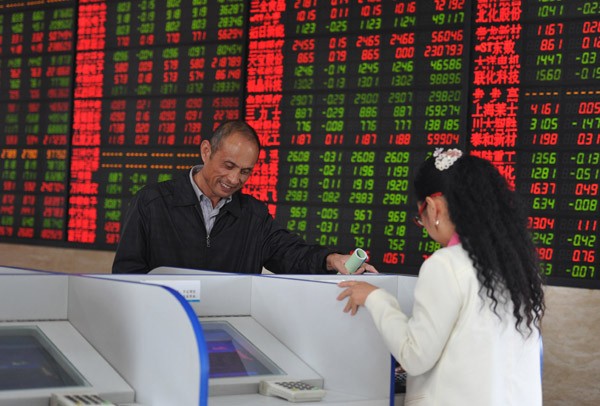China ETFs_1
Post on: 26 Апрель, 2015 No Comment

Emerging Markets: China ETFs Overview and forecast
The Chinese investment market may not be familiar to some readers, and it’s necessary to set the scene for basic orientation. The Chinese market is an emerging capital market, as well as an emerging industrial and equity market. The Chinese capital flow has a very different dynamic to other markets. It’s much more rapid, up and down, in investment terms. It’s volatile by Western standards, but it’s also highly competent, Western educated, and very focused on returns.
www.etftips.com/TAO
Chinese real estate, like other markets, is a true indicator of economic situations. The Chinese urban property market went through a massive boom, followed by a shuddering halt as the recession hit. Although the Chinese industrial market is still limping along, the real estate market has clearly come back to life.
www.etftips.com/FXI where millions of units have been traded regardless of the crash. The Chinese equity market is big and very active. Pre- crash, liquidity was a serious concern in China, because of the lack of capital investment opportunities. FXI went from a low of $24 at the start of the second quarter of 2009, to near $40 in mid June.
Short term (6 months)
A word of caution here. The Chinese market is highly reactive. Like other markets, it tends to over buy, and over sell. Trading patterns are purely margin based, and the speeds, depths and volumes of reaction to price moves can be unnerving. As you can see from our charts, margins for traders are very healthy, but the scale and speed of reversals can come as a shock.
Our two examples are good indicators. FXI has been doing quite well on more or less stable trading volumes, which are if anything reduced volumes on the previous quarters. TAO, on the other hand, did very well on minimal trading turnover, and has increased the rate of price rises with added volumes.
The Chinese market does produce very good conditions for traders. The likely result in the short term is a general improvement, with upside remaining beyond the short term period. Traders and investors should note, however, that short term bottom line margins need to be positioned well. The depth factor in trading should never be underestimated, because stocks can drop deeply and steeply.
Medium term (2 years)
There are slight glimmers of an economic recovery in China, despite drastically dropping orders for exports and declining import levels. China is currently continuing on with other parts of its economic development, and the current Five Year Plan calls for growth on the order of 8%. That may not be achieved in the short term, but a reviving global economy will move China back into forward gear, when it happens.
China is also attempting to develop its capital market, which is a very necessary tier to its economic development. The big surge in capital listings has gone, but this is also part of the Five Year Plan, and will return when conditions improve. The medium term view is therefore perhaps a more realistic perspective for investment in the Chinese based ETFs. A resurgence of capital investment will inevitably affect holdings, and the equity market will benefit almost immediately.
Long term (5 years)
The long term view for China is much stronger. The world’s factory is likely to be back in business over this term, and the massive capital generation will again be a major factor in investment. The Chinese markets are quite capable of generating huge returns to investors, and a good spread across the sectors will be the preferred investment option. The Chinese ETFs are likely to do very well in the long term.
There are other factors involved here. The development of the Chinese capital markets has been proceeding more or less outside the main framework of the Chinese economy. That may result in government action in the form of regulation, or other measures, (see Qualifiers to projections) but the Chinese markets will react to those measures almost instantly. Investors are advised to learn the behavioral patterns of the Chinese market, prior to investing.
Qualifiers to projections.
China is trying to reinvent itself as a modern economy, and the success is due largely to huge expansion of its export markets, and development of investment markets overseas. China is also having to deal with the effects of that growth. To capitalize effectively, it must rely on export returns to fund the rest of its modernization plans. As we’ve seen recently, the drop in exports had an immediate, drastic, short term effect.
China also has severe water shortages, massive pollution, and a large population base to consider. These factors were making themselves known, even before the crash. Logistics and demand for capital for very necessary remedial work are real factors in the Chinese capital markets.
China is committed to developing what is basically a Western demographic model middle class domestic economy, which has so far only been seen in the urban areas, and only to a degree. This is an important part of China’s modernization, and is absolutely necessary to produce a viable modern economy. That means that policy shifts, particularly in capital markets, are likely. The Central Committee of the Communist Party has recently been working to stabilize interest rates to deal with liquidity issues, remove tax incentives to foreign companies, and a raft of other measures. That will affect investment, and it will impact on investment markets.














